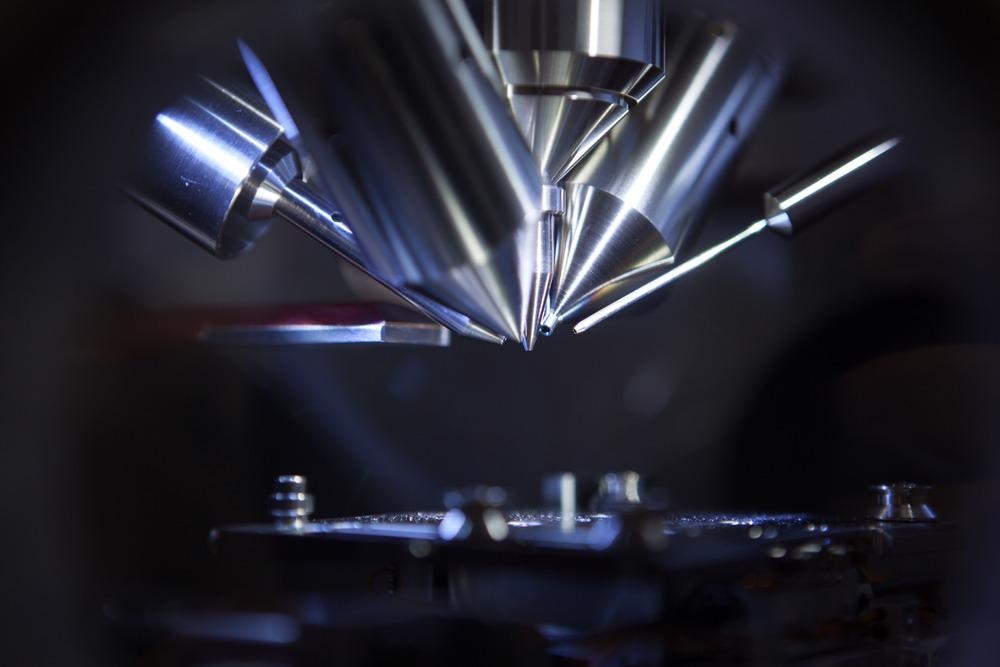Nanomaterials have become widely used in several applications across industry and research, such as chemical synthesis, catalysis, anti-bacterial coatings, many others. Many of the physical properties of nanoparticles are dependent on the size and chemical composition of the particle. Because of this, analytical methods that can profile the elemental composition, size, and structure of nanoparticles are an essential part of their characterization.

Image Credit: Intothelight Photography/Shutterstock.com
One way to try and control the final size nanoparticle properties is by using different synthetic approaches to nanoparticle creation, including the use of wet and dry synthetic procedures to control the size distribution of the resulting particles.
Often, wet synthesis achieves greater levels of monodispersity in particle sizes than dry approaches. For many industries, size dispersity is a key aspect of quality control. This can negatively affect the solution phase behavior of the nanoparticles and cause issues with machining processes such as deposition and spin-coating for device creation.
An increasing number of nanoparticle blends and particle types are becoming available. Still, as the technical demands of various nanoparticles applications also continue to grow, there is a great incentive for solving the challenge of reliable, controllable synthesis for a variety of particle types.
This is also key for increasing the number of suppliers who can provide nanoparticles on a large scale without needing to engineer small batches at a time.
Nanoparticle Characterization
Microscopy techniques have played a key role in nanoparticle characterization. Electron microscopes have received particular interest due to their excellent spatial resolution and have been used to characterize particle sizes and shapes.
Transmission electron microscopy and atomic force microscopy are also widely used. Some of these techniques are used in combination with energy-dispersive X-ray spectroscopy to perform elemental characterization and size profiling of the particles.
However, all of these techniques are costly and require access to advanced equipment. Recently, a far more common workhorse analysis tool, mass spectrometry, is now being applied to nanoparticles.
Mass spectrometry is widely used in the chemical industry for analyte identification and quantification. Depending on the type of ionization source used, it is compatible with a wide range of materials. There are many variations of the technique that can further improve its mass selection capabilities.
In a mass spectrometry measurement, the sample of interest is ionized using an ionization source. It is also typically transformed into the vapor phase. Once ionization has occurred, the analyte is now a charged species and can be passed through the instrument by controlling a series of electrostatic potentials on various plates.
There are many different mass spectrometer designs, and some have multiple ion collision stages to induce further fragmentation of the charged analytes. Still, all spectrometers rely on a time-of-flight region where analytes are separated by their mass-to-charge (m/z) ratio.
For the same given charge, higher masses result in longer flight times, and so from the time-of-flight spectra, a mass-resolved spectrum of various fragments of the analytes can be recorded.
The ionization source and method are a key part of a mass spectrometry instrument. Less volatile and more ‘fragile’ compounds that are prone to fragment very easily at low energies often need a different ionization method than small, robust chemical species that will remain intact on bombardment with high energy electrons.
Nanoparticles and Mass Spectrometry
For nanoparticles, electrospray and matrix-assisted laser desorption (MALDI) ionization sources can be used to accurately characterize the core's size and any ligands that may have been added to the surface for functionalization. As many applications require that the nanoparticles used have a very narrow size distribution, mass spectrometry can also be used to investigate the size dispersity, measuring the average mass and the full mass distribution.
Generally, nanoparticles give rise to relatively sharp peaks in the mass spectrum, and with sufficient mass resolution, these can be used to look at the isotopic composition of the particles. Accurate masses are often used as a way of working out chemical compositions in mass spectrometry.
Having this information also makes it possible to identify which elements are present in the nanoparticle, and high-resolution mass spectrometry is an emerging technique for characterizing atomically precise nanoclusters.
One key advantage of mass spectrometry is the ability to use it at different stages of the synthetic procedure to identify particular reaction steps that may contribute to unwanted properties of the final nanoparticles.
While mass spectrometry and the interpretation of the spectra from this technique alone can be challenging for nanoparticles, the ease of use of mass spectrometry methods and the wide availability of the instrumentation are likely to make it an increasingly popular approach to characterization in the future.
Continue reading: A New Mass Spectrometry Method for Detecting Sepsis.
References and Further Reading
Stark, W. J., Stoessel, P. R., Wohlleben, W., & Hafner, A. (2015) Industrial applications of nanoparticles. Chem. Soc. Rev., 44, 5793–5805. Available at: https://doi.org/10.1039/c4cs00362d
Doncom, K. E. B., Blackman, L. D., Wright, D. B., Gibson, M. I., & Reilly, R. K. O. (2017) Dispersity effects in polymer self-assemblies: a matter of hierarchical control. Chem. Soc. Rev., 46, 4119–4134.Available at: https://doi.org/10.1039/c6cs00818f
Gangadoo, S., Chapman, J., Gangadoo, S., & Chapman, J. (2015) Nanoparticle and biomaterial characterisation techniques. Materials Technology, 30, B44–B56. Available at: https://doi.org/10.1179/1753555714Y.0000000201
Antoine, R., Comby-zerbino, C., Dagany, X., Chirot, F., & Antoine, R. (2021) The emergence of mass spectrometry for characterizing nanomaterials. Atomically precise nanoclusters and beyond. Materials Advances, 2, 4896–4913. Available at: https://doi.org/10.1039/d1ma00261a
Disclaimer: The views expressed here are those of the author expressed in their private capacity and do not necessarily represent the views of AZoM.com Limited T/A AZoNetwork the owner and operator of this website. This disclaimer forms part of the Terms and conditions of use of this website.